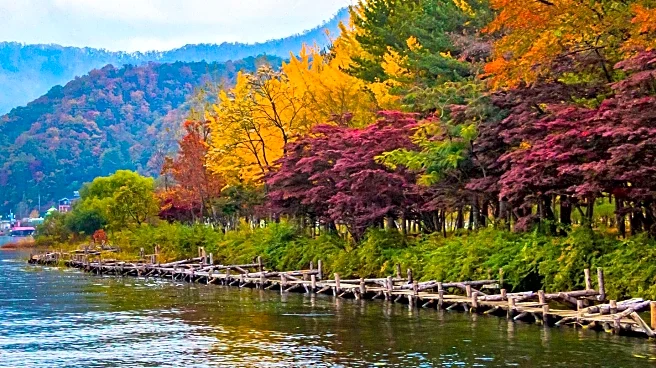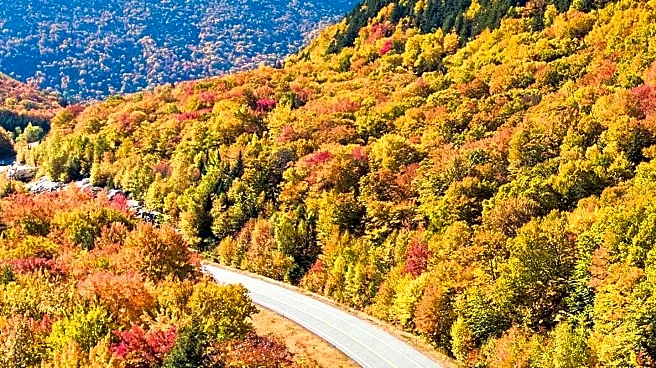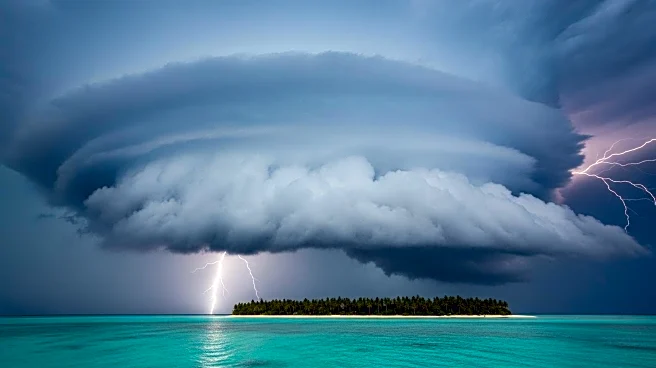What's Happening?
As October arrives, fall foliage across the United States is reaching its peak, drawing nature enthusiasts to witness the vibrant colors. The annual change in leaf color occurs as trees store chlorophyll, resulting in hues of yellow, orange, red, brown, and purple. Interactive maps, such as those from Smokymountains.com, help enthusiasts track peak foliage times and locations. Currently, areas with minimal fall colors include parts of Missouri, South Carolina, and California, while regions like northeastern Maine and northern Vermont are already experiencing peak colors. The map categorizes areas into near peak, peak, and past peak, providing a guide for leaf-peepers planning their visits.
Why It's Important?
The fall foliage season is significant for tourism and local economies, as it attracts visitors to various regions known for their natural beauty. Leaf-peeping contributes to economic activity in areas like New England, the Appalachian region, and the Pacific Northwest, where accommodations, dining, and recreational services see increased demand. The seasonal change also highlights the ecological importance of forests and the role of climate in influencing natural cycles. Understanding peak foliage times can aid in conservation efforts and promote awareness of environmental changes.
What's Next?
As the season progresses, more areas will reach peak foliage, offering opportunities for tourism and outdoor activities. Regions currently experiencing minimal colors will see changes in the coming weeks, providing a dynamic landscape for visitors. Local businesses and tourism boards may capitalize on the influx of visitors by promoting events and attractions related to fall foliage. Additionally, environmental groups may use the season to raise awareness about climate change and its impact on natural cycles.
Beyond the Headlines
The fascination with fall foliage reflects broader cultural and environmental themes, including the appreciation of natural beauty and the impact of climate on ecosystems. The seasonal change serves as a reminder of the interconnectedness of nature and human activity, prompting discussions on sustainability and conservation. As climate patterns shift, the timing and intensity of fall colors may change, influencing ecological research and policy decisions.












